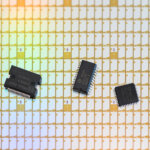IBM will collaborate with Japan to make the most advanced chips in the world

There was a time when Japan led the world in semiconductor manufacture. In fact, the Japanese were once a producer of more than half the world’s chips — far from the country’s reality today. Today, Japan is struggling to retain even a 10% share of the market, despite still having a formidable concentration of factories and critical links in the global supply chain.
However, the country plans to change its trajectory — it wants to get back into the chip race. So last month, a consortium of eight Japanese companies formed Rapidus, a company that the government of Japan hopes can help the country get back into the advanced chip manufacturing race. Rapidus will be subsidized by the Japanese government and so far, the approach taken differentiates itself from prior national efforts by the fact that they are collaborating with international organizations.
To understand the Japanese government’s approach, it is important to first note that the country seeks to successfully mass produce 2nm technology in five years – an ambitious goal, because 2nm is the most advanced chip technology yet. Achieving this would let Japan catch up with its rivals around the world, which would be remarkable as even local experts and industry players acknowledge that Japan has fallen 10-20 years behind in cutting-edge technology.
To achieve its aim, just one month after being formed, Rapidus announced a collaboration with a Belgium-based microelectronics research hub, IMEC, on advanced semiconductor technologies. “International collaboration is crucial for Rapidus to achieve our planned goal for mass-production of 2nm technology, and IMEC is an essential partner for such collaboration,” said Atsuyoshi Koike, Rapidus President, at the signing ceremony.
Rapidus did not stop there — this week, it also announced a partnership with the research arm of US tech giant, IBM Research, to develop IBM’s 2nm technology in fabs that Rapidus plans to build in Japan during the second part of this decade. While the agreement is nominally for IBM’s 2nm process, it likely includes a long-term commitment to build advanced semiconductor chips going beyond the 2nm process node, Forbes suggested.
The agreement would also have Rapidus send engineers to learn about the 2nm process at the IBM Research lab located in the Albany, NY NanoTech Complex, alongside IBM Research engineers. IBM Research already has an extensive research group in Japan. As it is with IMEC, IBM will also be collaborating with Rapidus on the soon-to-be established Leading-edge Semiconductor Technology Center (LSTC) in Japan.
LSTC is the overall umbrella organization to coordinate the ongoing semiconductor research, while Rapidus will be the manufacturing organization. LSTC was created after the US and Japan agreed on the Basic Principles on Semiconductor Cooperation in May at the first meeting of the Japan-US Commercial and Industrial Partnership (JUCIP).
YOU MIGHT LIKE

US desires multilateral chip fab equipment ban to China
Some argue that this may well be the last, best opportunity for Japan to get back into leading-edge semiconductor manufacturing. As it is, Japan is consuming a lot of semiconductors with automotive and electronics vendors such as Toyota and Sony, which are also investing in Rapidus.
“It will take several trillions of yen,” to get pilot production up and running, Koike said at a news conference in Tokyo this week. He however did not say where the money would come from, or where in Japan it would build a foundry. When Japan’s industry and trade ministry launched Rapidus last month, it said it would invest an initial 70 billion yen (US$500 million) for now.
Japan still leads the market in some products that are essential to semiconductor manufacturing, including specialty chemicals and silicon wafers. The country also has a near monopoly on some of the highly specialized tools used in the production process. What it lacks though is the expertise to make the cutting-edge chips that are manufactured only in Taiwan and South Korea.
What is IBM bringing to the table for Japan?
As for IBM, the company was the first in the world to introduce a 2nm node chip last year. IBM claims this new chip will improve performance by 45% using the same amount of power, or use 75% less energy while maintaining the same performance level, as say, 7nm-based chips. To give some sense of scale, with 2nm technology, IBM could put 50 billion transistors on a chip the size of a fingernail.
According to IEEE Spectrum, “The foundation of the chip is nanosheet technology in which each transistor is made up of three stacked horizontal sheets of silicon, each only a few nanometers thick and completely surrounded by a gate. Nanosheet technology is poised to replace so-called FinFet technology, named for the fin-like ridges of current-carrying silicon that project from the chip’s surface.
IBM’s development came after Taiwan Semiconductor Manufacturing Co. (TSMC) decided to stay with FinFets for its next generation process, the 3nm node. While IBM’s manufacturing partner, Samsung, does plan to use nanosheet technology for its 3nm node chips, IBM outdid them both by using nanosheets and going down another step to a 2nm node.









